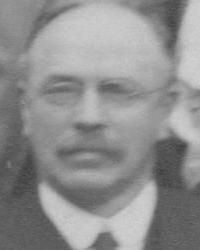Name Martin Knudsen Role Physicist | Awards Alexander Agassiz Medal | |
 | ||
Born February 15, 1871Hasmark ( 1871-02-15 ) Known for Study of molecular gas flow and the development of the Knudsen cell Notable awards Alexander Agassiz Medal (1935) | ||
Education University of Copenhagen | ||
Martin Hans Christian Knudsen (February 15, 1871 in Hasmark – May 27, 1949 in Copenhagen) was a Danish physicist who taught and conducted research at the Technical University of Denmark
He is primarily known for his study of molecular gas flow and the development of the Knudsen cell, which is a primary component of molecular beam epitaxy systems.
Knudsen received the University's gold medal in 1895 and earned his master's degree in physics the following year. He became lecturer in physics at the University in 1901 and professor in 1912, when Christian Christiansen (1843–1917) retired. He held this post until his own retirement in 1941.
Knudsen was renowned for his work on kinetic-molecular theory and low-pressure phenomena in gases. His name is associated with the Knudsen flow, Knudsen diffusion, Knudsen number, Knudsen layer and Knudsen gases. Also there is the Knudsen equation; two instruments, the Knudsen absolute manometer and Knudsen gauge; and one gas pump that operates without moving parts, the Knudsen pump. His book, The Kinetic Theory of Gases (London, 1934), contains the main results of his research.
Knudsen was also very active in physical oceanography, developing methods of defining properties of seawater. He was editor of Hydrological Tables (Copenhagen–London, 1901).
He was awarded the Alexander Agassiz Medal of the U.S. National Academy of Sciences in 1935.
